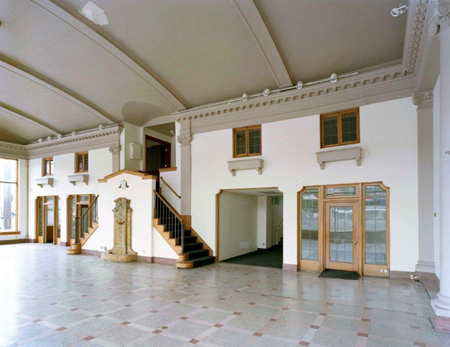
McKay Block salvage and demolition
Architect: Bola Architecture + Planning
Engineer: RFA Structural Engineers
Owner: City Investors XX LLC
ABC members: Nuprecon, Salmon Bay Sand & Gravel Co., Propel Insurance, Clark Nuber PS
The Ford McKay and Pacific McKay buildings are adjacent structures, which together comprise a single designated Seattle landmark. For more than 80 years they served as significant examples of the early auto show rooms of the 1920s.
The impending widening of nearby Mercer Street due to a major transportation project meant that the buildings would have to be relocated. After a preservation study revealed that it was impractical to move the buildings, Rafn was brought in to preserve, restore and retain the primary facades of the buildings, along with the historic showroom in the Pacific McKay Building. The pieces were to be stored and eventually reassembled as part of a new building to be constructed on the site after the Mercer Corridor project is finished.
In addition to preserving significant elements of the buildings, the team had to document the original construction to ensure that pieces could be successfully rebuilt. Rafn used 3-D laser scanners to build accurate elevation drawings and models. It also used photographs to create large-format elevation pictures for cataloging the entire terra cotta exterior. After being removed, each piece of terra cotta was labeled and its exact location documented on the appropriate elevation drawing.
The team took the same care in documenting and removing the interior elements.
Once all the pieces had been removed, crews repaired damaged pieces. Pieces that were beyond repair or that required duplicate reproductions were sent to a terra cotta manufacturer in Boston Valley. All the cleaned and finished pieces were then crated sequentially for future reconstruction.
Test castings of the decorative plaster elements were produced on-site to assure that the decorative plaster could be reproduced accurately in the future.
The mahogany millwork was salvaged either as individual pieces or in sections and cataloged, crated and stored like the terra cotta. Rafn also salvaged the tile fountain and repaired and stored the stained glass windows. Once the deconstruction phase was complete, the team demolished the remainder of the building structures; backfilled the existing basement; and graded the site with a top course of gravel in preparation for future use as lay-down area for contractors working on the Mercer Corridor. Crews crushed 3,000 tons of concrete from the demolished structures and reused it as backfill for the basement.
The team set up two work areas: one for the masons, allowing them to manage noise and dust; and another as a construction, cataloging and storage crate-filling center. This separation of spaces allowed each activity to function without disruption to other activities, increasing safety.
The project was completed on schedule and under budget. There were no time-loss injuries during the 3,650 hours worked.